The History of Dive Watches
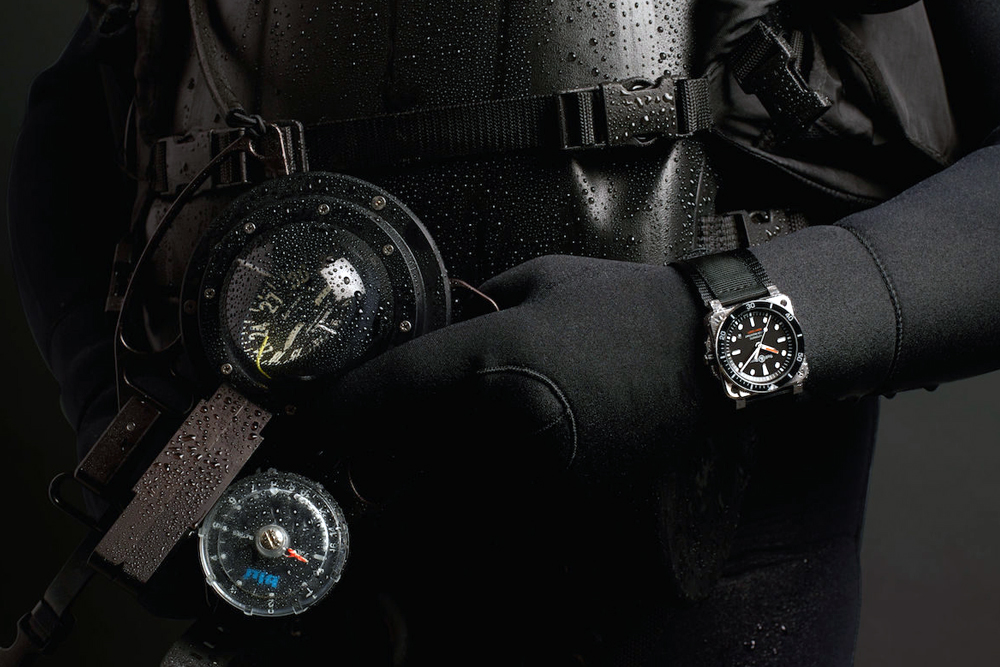
Watches have been used as portable timekeeping devices for a long time now. Suppose you are in space, the watch on your wrist will accurately tell you the time. Similarly, the divers who undertake the herculean task of scuba diving have to time their breath with extreme precision and accuracy. For this task, the scuba divers usually require a timekeeping device that is resistant to enormous pressures of water at great depths, whilst retaining the accuracy of its function. Meeting these requirements took the watchmaking companies to introduce a completely new timekeeping device- the diving watches.
Having a distinct look of rugged build, recognizable bezels, and extreme water resistance, the diving watch has come a long way since it was first built. The technological advancements that gained momentum through the decades of the 60s and 70s both in the realm of scuba diving and watchmaking industry have changed these watches by far. These watches benefitted from the technological advancements made in the world of submarines. All the prestigious watchmakers stepped into making water-resistant diving watches at some point in time. Let us dive into the history of such watches.
Before the advent of modern waterproofing designs, the first water-resistant watches relied on heavy and large external cases that used to screw down onto the crown. The problem with the case of this size was that it found no practical use to the civil customers who used watches. This problem had been sorted out by a watchmaking enthusiast named Francois Borgel in Geneva. The technologies patented by this watchmaker enabled watchmakers to omit the heavy external case, and still making the normal watch dial resistant enough to water and dust. These two patents were filed between 1891 and 1903, with 1903 one being a threaded ring around the bezel, upon which the case would be screwed.
Although Borgel’s design helped to seal the movement to a great extent, one problem remained: the sealing of the watch crown against moisture and dust. Borgel’s threaded design did slow down the rate at which moisture and dust invaded the crown, but it still could prove dangerous in the long term. The first patent for an actual waterproof crown belongs to Georges Perret. As shown in the image below, Perret introduced a screw-down crown.
The Rolex Oyster:
Seeing the efficiency of Perret’s design, Hans Wilsdorf, who was the founder of the famous Rolex watchmaking company, set out on making a true water-resistant watch. It was this watch that paved the way for the creation of water-resistant watches by other companies. The first organized attempt to make a hermetically sealed watch was the Rolex Submarine or Hermetic from 1922. Because of the relative unpopularity of diving at that time, not much was put into this watch for making it truly water-resistant. The Hermetic had a ‘lid’ on the top of its dial, and when the lid was screwed onto the dial, the dial was sealed for good. It was more of a conventional wristwatch, with merely an external case added for enhanced protection against ‘moisture’. However, this was the first watch that gave birth to the idea of water-resistant watches. There is a well-connected tail to the existence of the Rolex Oyster. This tail involves swimming across the English channel by a woman known as Mercedes Gleitz. Wilsdorf was sensible enough to use the public hype for the fame of his own company. Mercedes had previously claimed that she swam across the whole English Channel in 15 hours. But the public considered this claim as a fabricated one. However, when she decided to swim for the second time, Wilsdorf was farsighted enough to persuade Gleitz to wear the Rolex Oyster during her swim, which increased the public confidence in the water-resistant capabilities of the Oyster. This and other steps were taken by Wilsdorf, made Rolex famous enough, and granted it much needed attention that enabled it to prevail over the watchmaking regimes for decades to come.
The famous ‘Pasha de Cartier’:
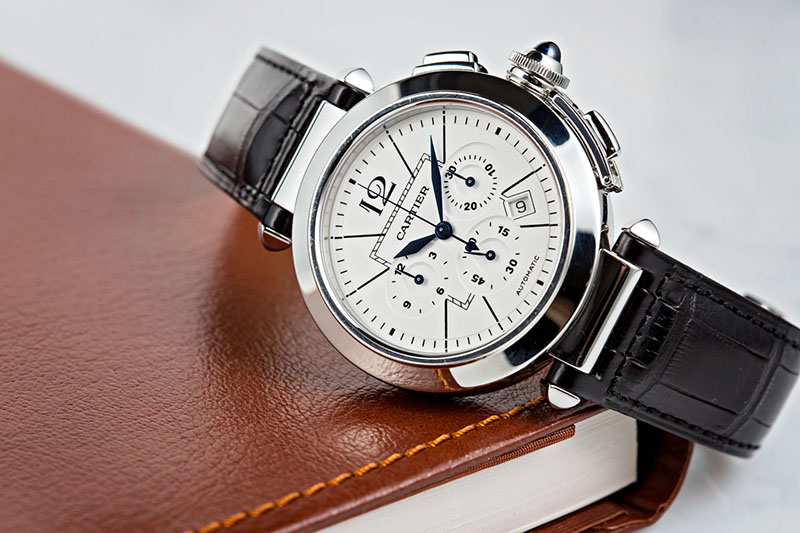
After the Rolex Oyster achieved its hype, many watchmaking brands decided to step into the waterproof watchmaking industry. These tries also included the watches made by two already popular watch brands: Cartier and Omega. Both of these brands were considered as the top of the line luxury brands, which used to manufacture watches for the gentry upon customized orders. There is a famous tail associated with this tradition. The luxury watchmaker Cartier received an order for a waterproof watch from the Pasha of Marrakech in 1932, who wanted to wear a waterproof watch in the occasional swims he used to take in his swimming pool. Cartier considered this order as the do-or-die situation for the company, as such luxury orders for the company were very rare. Resultantly, the company allocated more than enough resources to design a waterproof watch which precisely met the requirements enlisted by the Pasha. The company eventually succeeded in creating a masterpiece that had a little screw-on cap to seal the crown, hanging with a tiny bracelet fixed to the dial itself. The watch became the pinnacle of luxury symbols of that time. Having the best water resistance of that time and the accompanying luxury, the watch later was known as ‘Pasha de Cartier’. Seeing the demand and the public hype, Cartier reissued the watch in 1943, then in 1985, and is still made by the company to this day.
The Omega Marine:
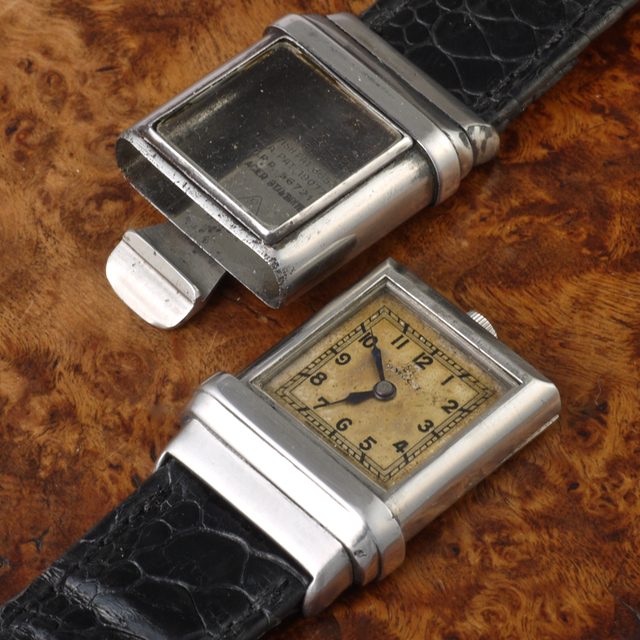
Aside from the symbolic brands of Rolex and Cartier, there was another brand trying its luck in making waterproof timepieces. This was the watchmaker Omega. Although Rolex Oyster and Pasha de Cartier fitted well into the definition of water-resistant timepieces of that time, both of them never experienced the true tests of deep water diving. Rolex Oyster was worn in a necklace and survived tests in fish tanks, so it was never exposed to the immense pressure and brutal forces of splashing water on wrists while swimming. The much more demanding deeper dives still had no timepieces to be taken or worn with them. It was 1932 when Omega came forward with its creation in the world of water-resistant timepieces, the Omega Marine. This watch was considered to be the first truly water-resistant and hermetically sealed timepiece that could be worn in serious and deep-water dives. Omega relied on a sliding external case similar to the Rolex technology of the time, but it was a much more improved design. Omega claimed that the leather straps that completely sealed the watch package were truly resistant to the saltwater. Omega even conducted water tests to prove the water-resistant capabilities of the watch. These tests included submerging the watch in hot water at 85 degrees Celsius, then immediately taking it to 70-meter depth. The watch came out of these tests with flying colors, and this made the Omega Marine a truly modern, water-resistant watch of its time, that actually was worn by divers in their deep-water dives and stood by those tests efficiently.
Later, in 1939, Omega released a slightly redesigned version of the watch, the Marine Standard. The external case was less complex, and Omega employed rubber gaskets to improve the water-resistance of the watch. This solution of using rubber to hermetically seal the devices is still used today.
The Panerai Radiomir:
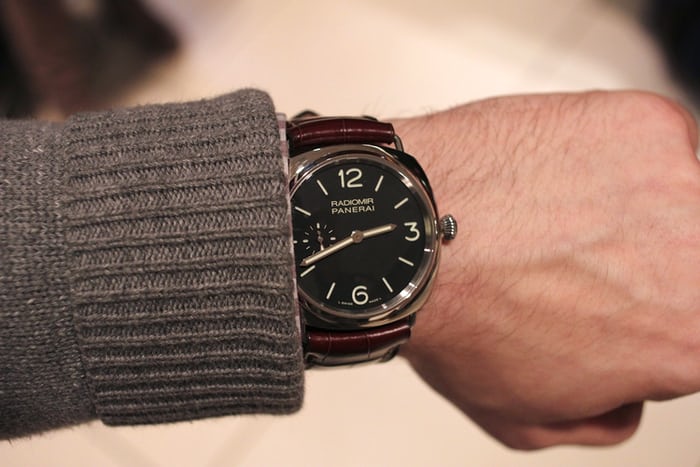
Until now, all the water-resistant watches hadn’t addressed the issue of legibility of the dial under the water. This issue was addressed by Florentine Officine Panerai, which used to supply the Regia Marina with exclusive diving gear. Regia Marina was an elite diving group of the Italian special forces. Panerai collaborated with Rolex, which supplied the company with cases for the watches. Panerai worked to develop a multi-use watch for the Italian marines, who wanted a watch that was reliable in even underwater combat-related situations. The collaboration resulted in the birth of the Panerai Radiomir, a watch made through aggressive use of waterproofing techniques and legibility.
Radiomir employed the use of radium for enhancing legibility in underwater situations. Radium is a radioactive material that glows on its own due to its radiation, and unlike other luminous substances, doesn’t require ‘charging up’. This material was inducted into the hands of the watch and the center text ‘Radiomir’ on the watch. However, radium was completely banned from use in watches as the luminescent material owing to its adverse effects on health. It is said that the women who used their tongues to make a fine-tip brush to fix radium on the watch hands developed some serious radiation-related illnesses later in their lives. They even died in some of the cases. Although radium was banned from general use, it continued to be used by watch repairmen for another decade or so, and also found its use in military watches.
The enhanced waterproofing of early Panerais can be related to using ‘bridges’, which secured the bond between the seals of the crown. It even allowed to wind the movement of the watch when it was in a secured position. Employing such advanced measures for waterproofing led the Panerais to be the most trusted waterproof watches of their time.
The Fifty Fathoms:
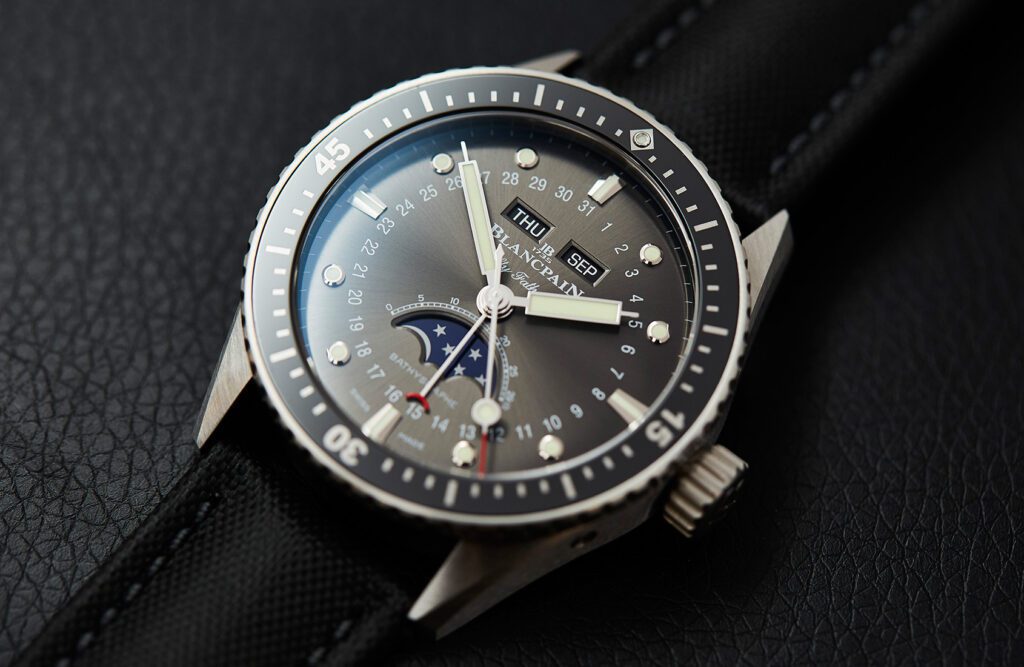
The first real diver’s watch title undoubtedly belongs to Fifty Fathoms from 1953. The watch was the first watch that passed the ISO 6425 standard, forty years before the advent of this testing technique for the diver watches. This watch passed all those tests because it comprised of all the required technical advancements that enabled it to withstand extreme pressures. This watch consisted of a rotating bezel, that enabled the diver to measure up to 60 minutes once the diamond on the watch bezel gets aligned to the momentary position of the minute hand of the watch. The watch employed an O- ring seal around the crown, which increased the water-resistant capabilities of this watch to a great extent. The brand shut down temporarily in 1980 after enjoying 27 years of fame. Three years later in 1983, the brand was revived, which reintroduces the Fifty Fathoms as a luxury divers’ watch in 1997, and still enjoys distinctive fame in the regime of diving watches.
The Rolex Submariner and Deep Sea Special:

Perhaps, the best-known diver’s watch came from Rolex, the Rolex Submariner. The watch was the result of advancements by Rolex in the waterproof watchmaking industry. Still today, after more than 60 years, the watch retains its characteristic dial and bezel along with a three-link stainless steel bracelet of the watch.
The crown of the diving watch industry belongs to the watch that easily defeated the mind-boggling depths of the Mariana Trench, the deepest point of our planet, more than 10000 meters below the surface of the ocean. This crown belongs to the Rolex Deep Sea Special. The Deep Sea Special had a massive Plexiglass crystal. The thickness was so much that the watch had a thickness of whopping 3.6 centimeters, a thickness that was unknown before for a watch. This massive crystal layer enabled the Deep Sea Special to endure 1100 times more pressure than what conventional watches bear on the surface while being strapped to outside of the special submersible known as the Deep Sea Challenger.
Aside from these awe-striking experiments, the dive watches continued to evolve. As the diving techniques advanced, divers started breathing a mixture of oxygen and helium. Helium is so small that it percolates through even the best hermetically sealed submersibles. This problem was sorted out independently by two companies, Rolex and Doxa. The result was a helium escape valve located near the 9 o’clock position of the case. This valve served a one-way function, and let the pressure mounting due to the helium escape. Otherwise, the pressure would have affected the functioning of critical watch parts. This achievement was patented by Doxa in 1969, while many people still consider Rolex as the company which first introduced this technology.
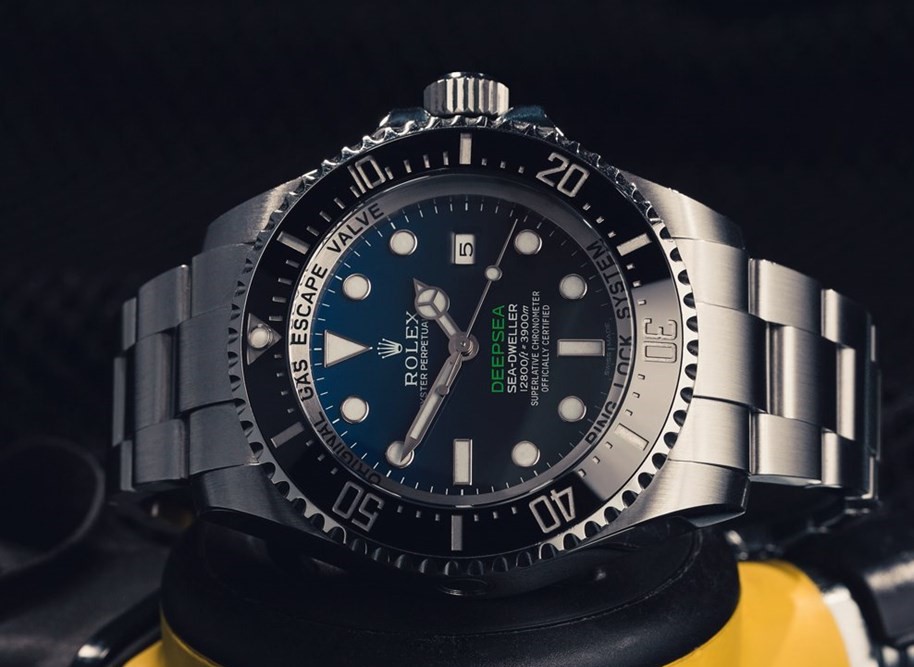
After 52 years, in 2012, the famous movie director James Cameron again paid a visit to the trench. Rolex, seeing the opportunity, accompanied this visit with their modified Deepsea watch, having 1.5 centimeters thick sapphire crystal mounted on a 28.5-millimeter thick case. The watch survived crushing pressures at a depth of more than 10000 meters for more than 3 hours and resurfaced again to function just like nothing had happened. After all these technological advancements step-by-step, the diving watches of today feature more of a sporty look for the athletes, while retaining the similar rugged features invented over the course of more than 100 years. The ISO 6425 certification has enabled the diving watches to attain rather iconic status, and still, the famous watchmakers have a separate category dedicated to their sales.
Times Ticking has been in operation for more than 30 years, since 1982. We have performed watch repair for customers both locally and internationally. If it Ticks! We KNOW it! Our team of watch repair technicians have a combined experience in watchmaking of over 120 years.

